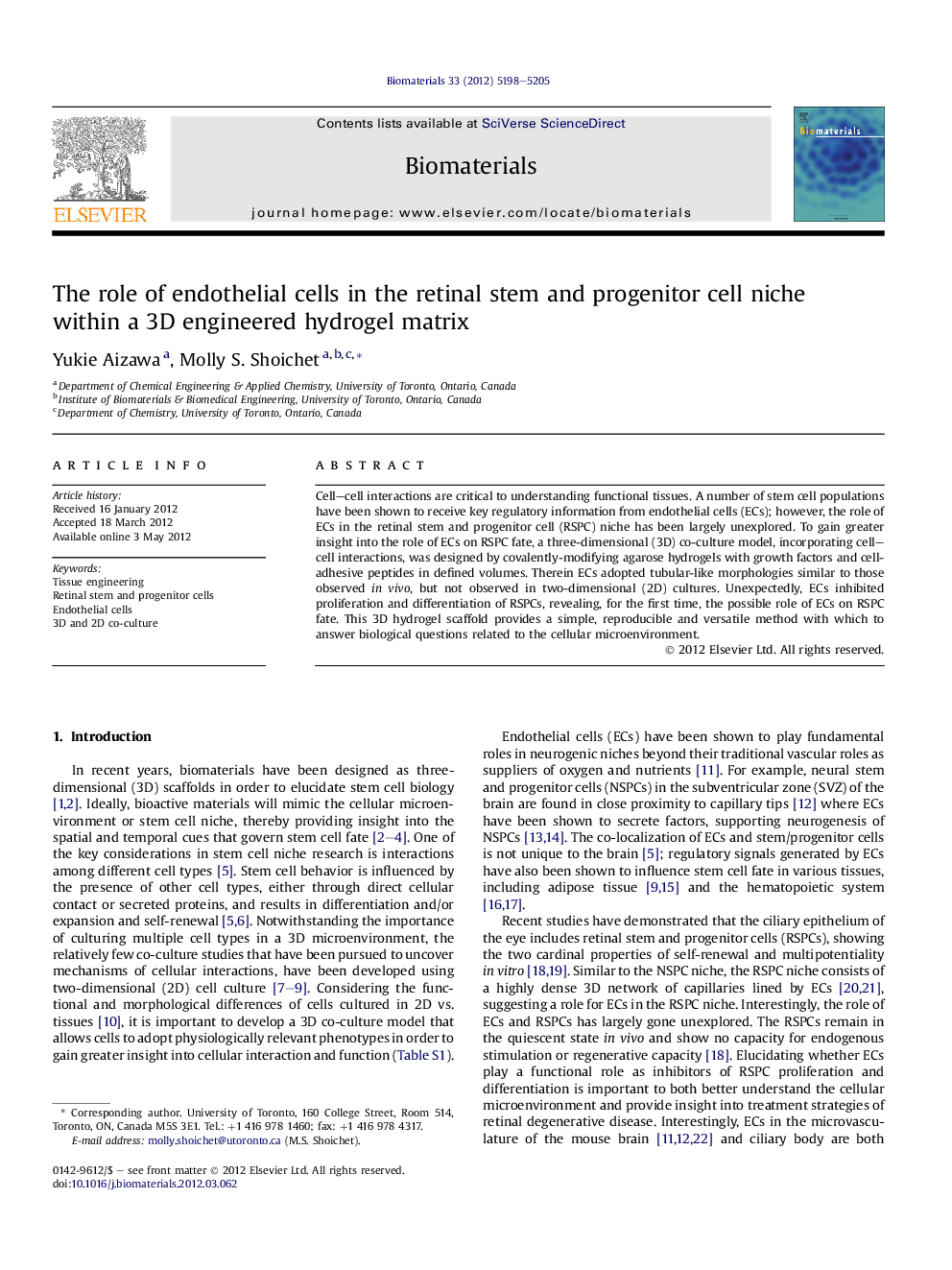| Article ID | Journal | Published Year | Pages | File Type |
|---|---|---|---|---|
| 10229498 | Biomaterials | 2012 | 8 Pages |
Abstract
Cell-cell interactions are critical to understanding functional tissues. A number of stem cell populations have been shown to receive key regulatory information from endothelial cells (ECs); however, the role of ECs in the retinal stem and progenitor cell (RSPC) niche has been largely unexplored. To gain greater insight into the role of ECs on RSPC fate, a three-dimensional (3D) co-culture model, incorporating cell-cell interactions, was designed by covalently-modifying agarose hydrogels with growth factors and cell-adhesive peptides in defined volumes. Therein ECs adopted tubular-like morphologies similar to those observed in vivo, but not observed in two-dimensional (2D) cultures. Unexpectedly, ECs inhibited proliferation and differentiation of RSPCs, revealing, for the first time, the possible role of ECs on RSPC fate. This 3D hydrogel scaffold provides a simple, reproducible and versatile method with which to answer biological questions related to the cellular microenvironment.
Keywords
Related Topics
Physical Sciences and Engineering
Chemical Engineering
Bioengineering
Authors
Yukie Aizawa, Molly S. Shoichet,
